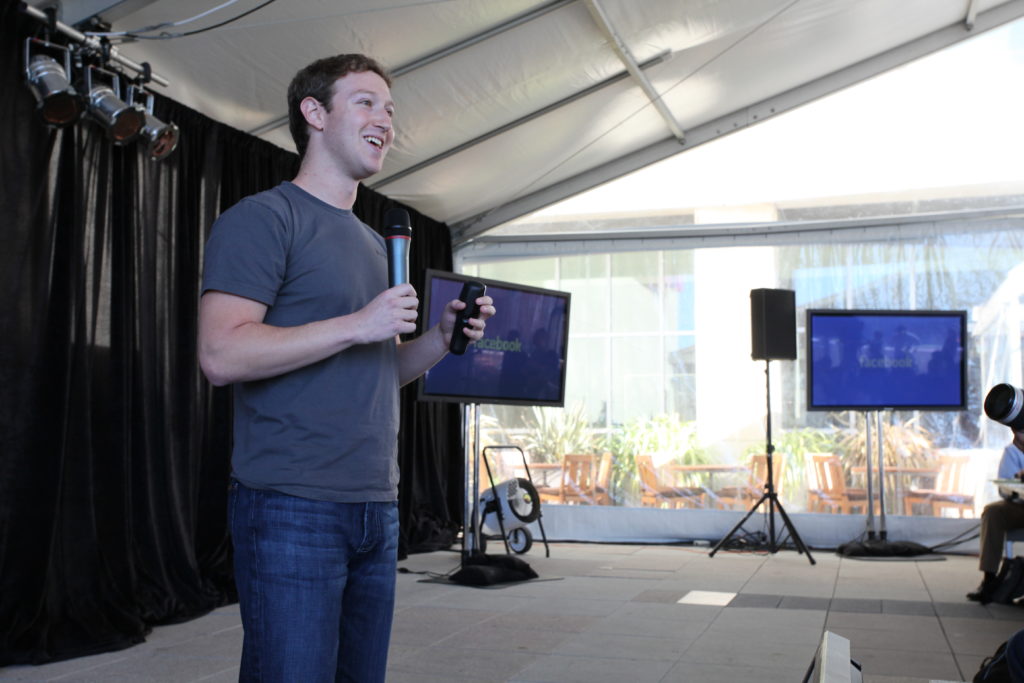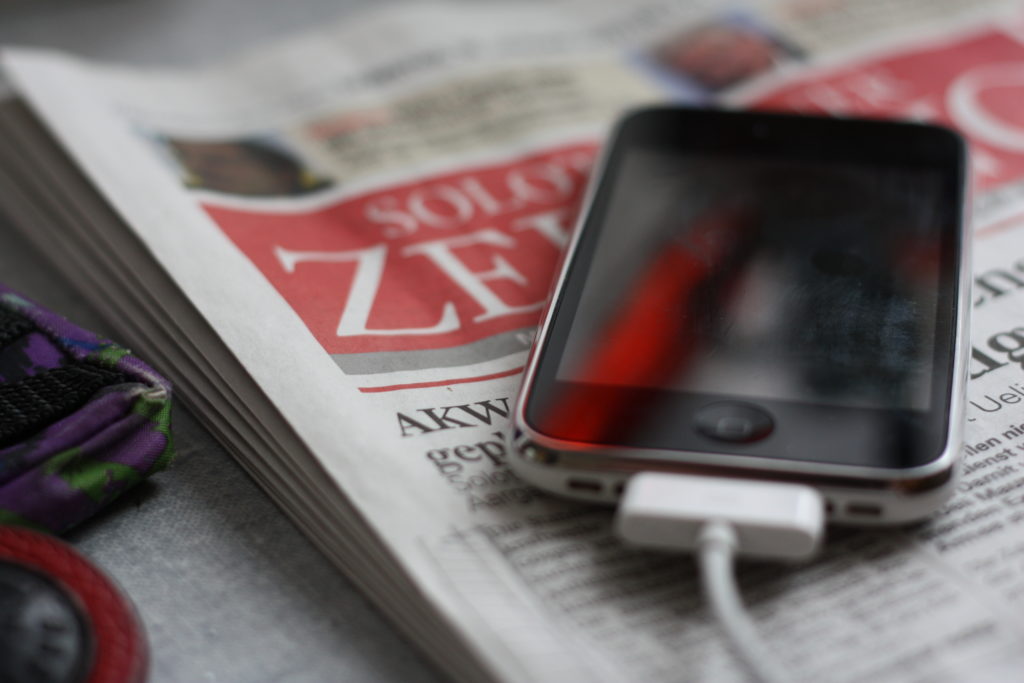When Facebook began as an online directory for Harvard students in 2004, no one—not even founder Mark Zuckerberg—anticipated its use beyond forging college connections. Facebook, wrote Zuckerberg, was intended to help college students “understand what was going on in their world a little better.” Yet Facebook has since blossomed into a full-fledged social media site, and as of January 2017, approximately 81 percent of Americans have at least one social media profile—a 57 percent increase from 2008.
Beyond growth as a social media site, Facebook has seen another change: according to a Pew Research study from May 2016, the general public increasingly considers social media sites such as Facebook to be a source of news. Of the approximately two billion active monthly users on Facebook, nearly 66 percent—and thus 44 percent of the general population of the United States—obtain news from the site.
More striking, however, is what this social media giant replaces; of users who receive news from Facebook, only 15 percent also consult newspapers for news. If Facebook is replacing the most traditional form of news dissemination, one would hope that its quality is comparable. But, overwhelmed by an abundance of information, selective exposure, and ‘filter bubbles’, this new avenue for news may estrange or even polarize Americans long before it aids them.
‘Infobesity’ and Immeasurable Variety
The abundance of information available to Americans online constitutes a phenomenon known as “infobesity.” As Carlos Watson, founder and CEO of Ozy Media, told the HPR, the reality that “there’s just too much information online” and not all of it is helpful or even relevant.
On social media sites such as Facebook, a single political article may be lost among the less news-oriented posts from family and friends—while much information is present, only a small facet of it may be political. The average news feed, in fact, consists of nearly 300 stories—a result reached only after the Facebook algorithm consults between 1,500 and 15,000 stories in total.
The sheer number of stories encountered by every user is not the only problem, however—there is also the variety among users’ feeds. As Harvard Kennedy School professor Matthew Baum cautioned the HPR, “people have different constellations of ideologies amongst their friends and their social network,” and thus, those people control what content they see. While one set of users could present “a pretty diverse, thoughtful, and informative array of information” for their friends, explained Baum, another may present content that is “completely narrowcast and extremely limited in breadth.”
Or, as Watson highlighted, a large proportion of that which one might see in the newsfeed is “the big story of the day,” repeated “ad infinitum.” While Facebook may therefore trim the stories encountered by any one user to a manageable number, they, as a social media site, do little to control the content beyond consulting user preferences, reinforcing inconsistent exposure to a variety of political information.
A ‘High-Choice Media Environment’
Even with droves of information available, Americans are incentivized to limit what they consume—yet they often choose incorrectly. According to a 2005 paper from Princeton professor Markus Prior, in a “high-choice media environment,” “dramatic increases in available political information” do not coincide with noticeable changes in political engagement. While greater choice allows “politically interested” individuals greater access to more political knowledge, Prior wrote, those uninterested in politics “can more easily escape the news.”
This paper, though written over a decade ago, continues to be relevant. In an interview with the HPR, Prior confirmed that the media environment in the United States is still high-choice. In fact, “there’s indisputably more choice,” as a result of the emergence of social media. What began as a problem with cable television and the early Internet has thus been exacerbated by the rise of social media as a news source—users unwilling to view news can simply keep scrolling.
An additional detriment of such plentiful choice, according to Prior, is that in a high-choice environment, chance encounters with any political content also declines. Americans no longer have to endure “a few minutes of cable news” before “something entertaining comes on,” Prior lamented to the HPR. As he wrote in the 2005 paper, a “lack of motivation, not lack of skills or resources, poses the main obstacle to a widely informed electorate.”
Selective Exposure: A Psychological Issue
A lack of political knowledge among the electorate is only one problem: when media choice increases, selective exposure results—individuals seek out information that confirms their own biases and avoid contradictory information. On Facebook, users may—intentionally or unintentionally—limit their political awareness to only those ideologies and opinions held by their close friends. In choosing not to pursue political knowledge on social media, users may also choose not to encounter any opinions that may be contrary to their own. Social media thus represents, as Baum puts it, “a double-edged sword.”
Moreover, “if people are motivated to engage in selective exposure—meaning seeking out information sources that reinforce what they already believe or tell them what they believe is true—social media probably makes that easier,” Baum claims. Americans’ tendencies toward polarization “are likely to be reflected in their online social network.”
Still, political exposure in any form increases the likelihood of voting among the American electorate. For the approximately 44 percent of Americans who choose to receive some version of news on Facebook, then, it becomes a question of whether this exposure has positively impacted their voting preferences.
The ‘Perfect Personalized Newspaper’
Beyond human choices, Facebook’s algorithms may also be to blame for increased partisanship and polarization. While Mark Zuckerberg stated in 2013 that Facebook’s goal is to “build the perfect personalized newspaper for every person in the world,” Baum warned that Facebook and its algorithm’s main goal remains “trying to figure out what [will] keep users looking at their site.”
To do that, Facebook attempts to “figure out what people like and only give them that,” explains Baum. It is what Eli Pariser, chief executive of Upworthy, refers to in his TED talk as “filter bubbles”—small communities of individuals with like ideas isolated from the opposition thanks to the algorithms of their respective social media site. Through such bubbles, “the internet is showing us what it thinks we want to see, but not necessarily what we need to see,” critiques Parisier.
Similarly, Watson argues that “if we are all in our own tribes or all in our own bubbles,” it may be more difficult for them to debate difficult issues. While such algorithms therefore increase Americans’ fondness for the site, they do little to increase one’s exposure to diverse political opinions, and in fact, they may even reinforce the aforementioned problems of selective exposure and polarization.

The Newsfeed versus the Newspaper
Ultimately, the newsfeed performs many functions that the newspaper could not—enhancing mobilization, fostering connectedness among geographically distant people, and allowing greater freedom of choice in the political information individual Americans receive. Yet the newsfeed also restricts American political awareness in ways that the newspaper never did. The newspaper refused to shield Americans from opinions contrary to their own, and prevented the politically uninterested from remaining that way.
Unfortunately for Americans, this trend toward the newsfeed remains, as Prior revealed, “so different than everything we have seen until very recently,” to the point that Prior himself is “not quite sure what to make of it.” In the United States and abroad, both the benefits and the detriments of utilizing social media as a news source have yet to be specifically measured. The forecast, however, is ominous.
Image Credits: dulnan/Flickr Commons, Robert Scoble/Flickr Commons
